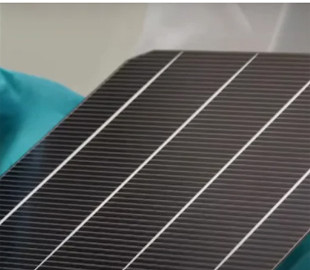
Thanks to the protective material, the panels withstood 1200 hours at a temperature of 85 °C and humidity of 85%, with almost no loss in performance.
A group of scientists from China has developed special films that increase the stability of perovskite solar panels while maintaining high efficiency. They describe their achievement in a paper for the journal Science.
One of the main problems of perovskite solar cells that prevent them from being brought to the commercial market is their low stability and rapid degradation under environmental influence. Layers of molybdenum disulfide (MoS2) can block unwanted migration of defect ions in the perovskite where the electrical charge is transferred and chemically stabilize the formamidinium phase of lead iodide.
The scientists write that they created single-layer buffer films of MoS2 on the wafer scale, which were placed on top and bottom of the perovskite layer, thereby preventing the migration of ions. Effective chemical passivation results from the formation of Pb-S bonds, and minority carriers are blocked by the alignment of type I bands.
Small perovskite cells (0.074 square centimeters) and larger modules (9.6 square centimeters) with this configuration have achieved power conversion efficiencies of up to 26.2% (certified steady-state efficiency of 25.9%) and 22.8%, respectively. Furthermore, the devices exhibit excellent stability in a hot environment at 85 °C and 85% relative humidity, losing less than 5% of their performance after 1200 hours.

